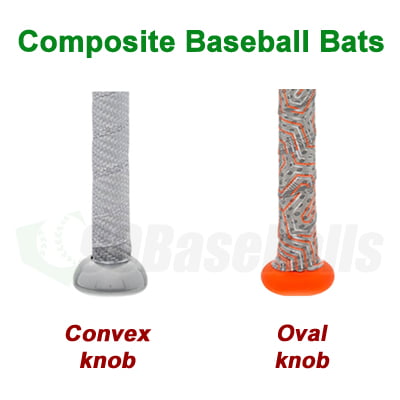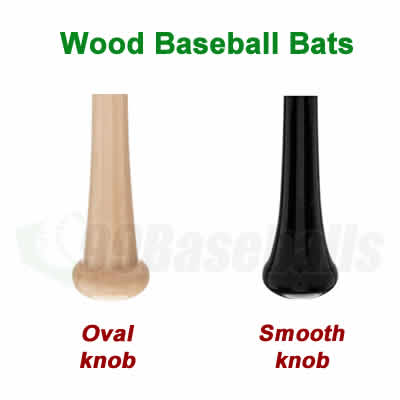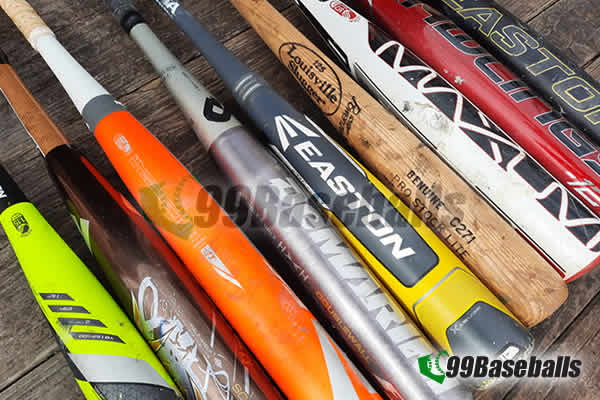“Alright, team, gather around!” I yell out, a familiar excitement bubbling within me as I clutch my trusty old baseball bat. A bat that is so worn out, that it should be on display in a museum. This bat is a veteran of countless popups, grounders and liners in my coaching youth baseball for over 15 years.
Let me take you on a journey that stretches beyond the diamond and into the heart of what makes baseball truly special – the bat.

You see, every bat has its tale, from the crude sticks used on the streets to the sleek, engineered marvels of today.
I remember Jamie, an under-sized 10 year old from our 2015 championship team, whose bat wasn’t the newest or the fanciest, but it carried the Jamie’s spirit of determination. Or Sarah, whose first home run was with a hand-me-down bat from her grandpa.
Whether you’re a budding player, a seasoned fan, or simply curious, join me in exploring the history of a baseball bat, craftsmanship, and the science that makes each swing a moment of potential magic.
Table of Contents
Baseball Bat Anatomy 101
Understanding the anatomy of a bat is crucial for any player, especially those just beginning their journey in baseball. If the bat is too heavy, a young hitter will not be able to connect with a ball because his swing will be too slow. On the other hand, a ball hit with a bat is too light will not travel far.
These are some of the considerations to keep in mind as we review the anatomy of a baseball bat.
The Barrel: The Hitting Powerhouse
The barrel is the thick part of the bat, where players aim to hit the ball.
The barrel’s construction, material, and weight distribution have direct impact on a batter’s performance. In my playing days, I learned that the barrel’s ‘sweet spot’ – the point where power and control intersect – is where magic happens.

The weight distribution and shape of the barrel can vary, affecting the bat’s swing speed and the ball’s trajectory. For younger players, a lighter barrel can help in developing a quicker, more controlled swing.
The Handle: Grip and Comfort
The handle is the thinner part of the bat, where the player grips.
Its diameter can significantly affect the hitter’s control and comfort due young player’s hand size.

During my coaching years, I emphasized to young players the importance of finding a handle that feels comfortable and allows for a firm, yet relaxed grip. Some bats feature a tapered handle, which can reduce the weight and increase the speed of the bat.
The Knob: Ensuring Balance and Security
At the very bottom of the bat is the knob, an often-overlooked but crucial component.
The knob prevents the bat from slipping out of a player’s hands during a swing. It also plays a role in the overall balance of the bat.


I’ve seen players customize the knob’s size and shape to fit their hand better, a small adjustment that can make a significant difference.
Material Matters: Wood vs. Aluminum vs. Composite
Traditional wood bats, used in the professional leagues, offer a classic feel and sound, but they can vary based on the type of wood used. Maple, ash, and birch are common, each with unique properties.
In contrast, aluminum and composite bats, popular in youth and amateur leagues, are lighter and often provide a larger sweet spot, making them more forgiving for new players.
Just keep in mind that given the identical size, a wood bat is considerably heavier than an aluminum or composite bat.
Weight and Length: Finding the Right Combination
The weight and length of the bat are critical in matching the bat to the player. It’s about balance and what complements the player’s physique and batting style.
As a coach, I always advised testing different bats to find the one that feels right – not too heavy to swing, but substantial enough to drive the ball.
Choosing the Right Bat: A Coach’s Perspective
Selecting the “right” baseball bat is a pivotal decision that should not be taken lightly. The perfect bat feels like a natural extension of the arm, enhancing the player’s strengths and compensating for weaknesses.
Through observing and guiding numerous young players, I’ve learned that the key to choosing the right bat lies in understanding the player’s unique style, strengths, and physical capabilities.
Understanding the Player’s Needs
The first step is to assess the player’s size, strength, and batting style.
A bat that’s too heavy can slow down a swing, while one that’s too light might not generate enough power.
For younger players, a lighter bat can help in developing bat speed and control. As players grow, they can transition to heavier bats to maximize power.
The Importance of Bat Length and Weight
The length of the bat should allow the player to comfortably reach across the plate, while the weight should enable a smooth, quick swing.
There’s a simple test I often recommend: if a player can hold the bat with one hand, extended out to their side, for about 20-30 seconds without strain, the bat is likely a good weight.
Balancing Bat Type with League Requirements
Different leagues have varying regulations on bat types.
It’s crucial to choose a bat that not only suits the player but also meets league standards.
For most youth baseball leagues, an aluminum or composite baseball bat with a “USA Baseball” stamp is required.
Allowed wood bats in youth leagues do not require this stamp.
USA Baseball stamp vs BBCOR stamp
BBCOR is short for “Batted Ball of Coefficient of Restitution” which measures the trampoline effect of the bat. It is the de facto standard which currently regulated adults (non-youth) baseball bats in High School and Collegiate play.

In earlier times, a pitched ball striking an alloy or composite bat would cause the barrel to flex slightly inward. This allowed the ball to retain some of its energy, often resulting in longer hits. In contrast, wood bats offer less flex, meaning the ball loses more energy upon impact.
The introduction of the BBCOR standard is a game-changer. It ensures that non-wood bats mimic the performance of wood bats more closely. This shift aims to even out the playing field and, importantly, enhance player safety.

As for the application of BBCOR bats, it varies depending on the league. In some leagues, players as young as 13 are allowed to use BBCOR bats, marking a significant step in their baseball development journey.
Comfort
The bat should feel right in the player’s hands. The grip, the balance, the feel on contact – all these factors contribute to a player’s confidence and performance at the plate.
I always encourage players to try different bats during practice to see what feels best for them.
The Role of Budget and Durability
While high-end bats can offer better performance, it’s important to consider budget and durability, especially for growing players who may need new bats as they develop.
You will end up replacing the bat every season or so (depending on your child’s physical development). Sometimes, a mid-range bat can offer a good balance between quality and affordability.
The Evolution of Bats: From Hickory to Alloy
The journey of baseball bats from simple hickory sticks to sophisticated alloy and composite designs is a fascinating story of innovation and adaptation. This evolution mirrors the changes in the game itself, reflecting advancements in technology and shifts in playing styles.
Early Beginnings: The Age of Wood
Baseball’s early days saw bats crafted from a single piece of wood, usually hickory or ash.
Hickory, known for its durability and strength, was the popular choice in the nascent stages of baseball. However, its heaviness often slowed swing speeds.
As the game evolved, players began to prefer ash bats, valued for their lighter weight and flexibility, which allowed for quicker swings and more nuanced control.
Ash bats reigned supreme for decades, favored by generations of players for their traditional feel and the classic ‘crack’ sound upon contact.
Transition to Lighter Woods: The Birch and Maple Era
The move towards lighter woods marked a significant shift in bat design.
Birch and maple emerged as popular choices. Birch, with its ideal balance of flexibility and strength, provided a middle ground between hickory and ash. Maple, on the other hand, gained fame for its density and hardness, offering a different hitting experience with greater power potential.
This era saw players experimenting with different wood types to suit their batting styles, showcasing the growing understanding of the relationship between bat composition and on-field performance.
The Introduction of Aluminum: Changing the Game
The introduction of aluminum bats in the 1970s revolutionized the game, particularly at the amateur and youth levels.
Aluminum bats were lighter, more durable, and less prone to breakage compared to their wooden counterparts. They allowed for greater bat speed and often produced a noticeable increase in the distance the ball traveled.
This shift to aluminum bats marked a new era, especially in college and youth baseball, where they became the standard.
Advancements in Technology: The Composite Bat Era
The latest chapter in bat evolution is marked by the advent of composite bats.
These bats, made from a mixture of carbon fiber, fiberglass, and resin, offer a unique blend of lightness and strength.
Composite bats can be engineered to reduce vibration, improve bat speed, and enlarge the sweet spot. They represent a significant leap in bat technology, combining the best qualities of wood and aluminum bats.
The Ongoing Debate: Wood vs. Non-Wood
The primary hurdle with wood bats lies in their weight; they’re significantly heavier, demanding more strength for an effective swing. Furthermore, wood bats have a comparatively smaller “sweet spot” than their aluminum counterparts.
When using metal bats, players can sometimes hit a long ball, even if the contact isn’t ideal, like getting jammed or hitting off the end of the bat. Though successful, such hits often send a stinging sensation through the hands.
However, wood bats leave little margin for error. For a solid hit, the ball must meet the fattest part of the barrel squarely, as illustrated in this diagram.
As a coach, my advice for young players is to start incorporating wood bats into their practice as they physically mature, typically around 11 or 12 years old, depending on their individual development.
This early exposure helps them adjust to the different feel and mechanics of wood bats, setting a strong foundation for future play.
Caring for Your Bat: Tips from the Dugout
Proper maintenance and care of a baseball bat are crucial for ensuring its longevity and performance.
A well-maintained bat not only performs better but also stays safe to use. Drawing on insights from the dugout, where equipment care is part of the daily routine, here are some essential tips for taking care of your baseball bat.
Regular Inspection: Check for Damage
Regularly inspect your bat for any signs of damage, such as cracks, dents, or splinters, especially if it’s a wood bat.
Small imperfections can quickly turn into significant problems if left unchecked.
For composite and aluminum bats, look for any dents or warping that could affect performance. Although made of metal, these bats are not indestructible, especially in the hands of an inexperienced player frequently hitting the ball with the end cap of a bat.
A good way to tell if a composite bat is broken is to grab the bat by the handle with one hand, and lightly tap the end of the bat on a soft surface. You will hear a telltale shaking or ratting noise if the bat is broken.
Proper Storage: Avoid Extreme Conditions
Store your bat in a controlled environment, away from extreme temperatures. Excessive heat or cold can adversely affect the bat’s material, especially for composite and aluminum bats.
For instance, don’t leave your bat in the trunk of your car, where temperatures can soar or plummet, potentially warping the bat or making it brittle.
Cleaning: Keep It Clean and Dry
After each use, wipe down your bat with a soft, dry cloth to remove dirt and moisture. For stubborn stains or pine tar, use a mild soap solution, but avoid harsh chemicals or abrasive materials that could damage the bat’s surface.
Ensuring the bat is clean and dry prevents material degradation and maintains its appearance and grip.
Proper Usage: Use As Intended
Only use your bat for hitting regulation baseballs.
Hitting cage balls, weighted training balls, or other objects can cause undue stress and damage that may void the bat warranty.
Also, avoid hitting your bat against hard surfaces, like the ground or cleats, which can cause dents in aluminum bats or cracks in wooden ones.
Rotating the Bat: Even Out Wear
Especially important for wood bats, regularly rotate the bat slightly with each use.
This practice ensures that the bat wears evenly over time, preventing one side from becoming overly weakened or damaged.
Handle and Grip Maintenance: Check and Replace as Needed
Regularly check the bat’s grip for wear and tear. A worn grip can lead to slippage and reduced control. Re-wrap or replace the grip as needed, ensuring it’s secure and comfortable in your hands.
Avoid Alterations: Maintain Integrity
Resist the temptation to alter your bat.
This includes shaving, rolling, or artificially warming composite bats. Not only can alterations damage the bat and affect its performance, but they’re also often illegal in regulated play and can be unsafe.
| Cooperstown All Star Village |
|---|
| Cooperstown ASV is a rite of passage for most 12U players. During the coach’s meeting, you will be required to sign a declaration that all baseball bats meet the regulation and have not been modified in any way. The form states that any discovery of “rolled bats” or such modification may results in expulsion and/or lawsuit so don’t do it. |
Wrapping Up
From the handcrafted wooden bats resonating with history to the precision-engineered BBCOR models of today, each bat carries a story, a legacy of the game’s evolution.
In my 15 years as a coach, I’ve seen young players grow and adapt, their journey often mirrored in the bats they choose.
We’ve explored the craftsmanship behind these beloved tools, the scientific principles that govern their performance, and the regulations that ensure fair play and safety. Whether it’s the nostalgic weight of a wooden bat or the modern feel of an alloy counterpart, each has its unique place in each player’s baseball journey.


